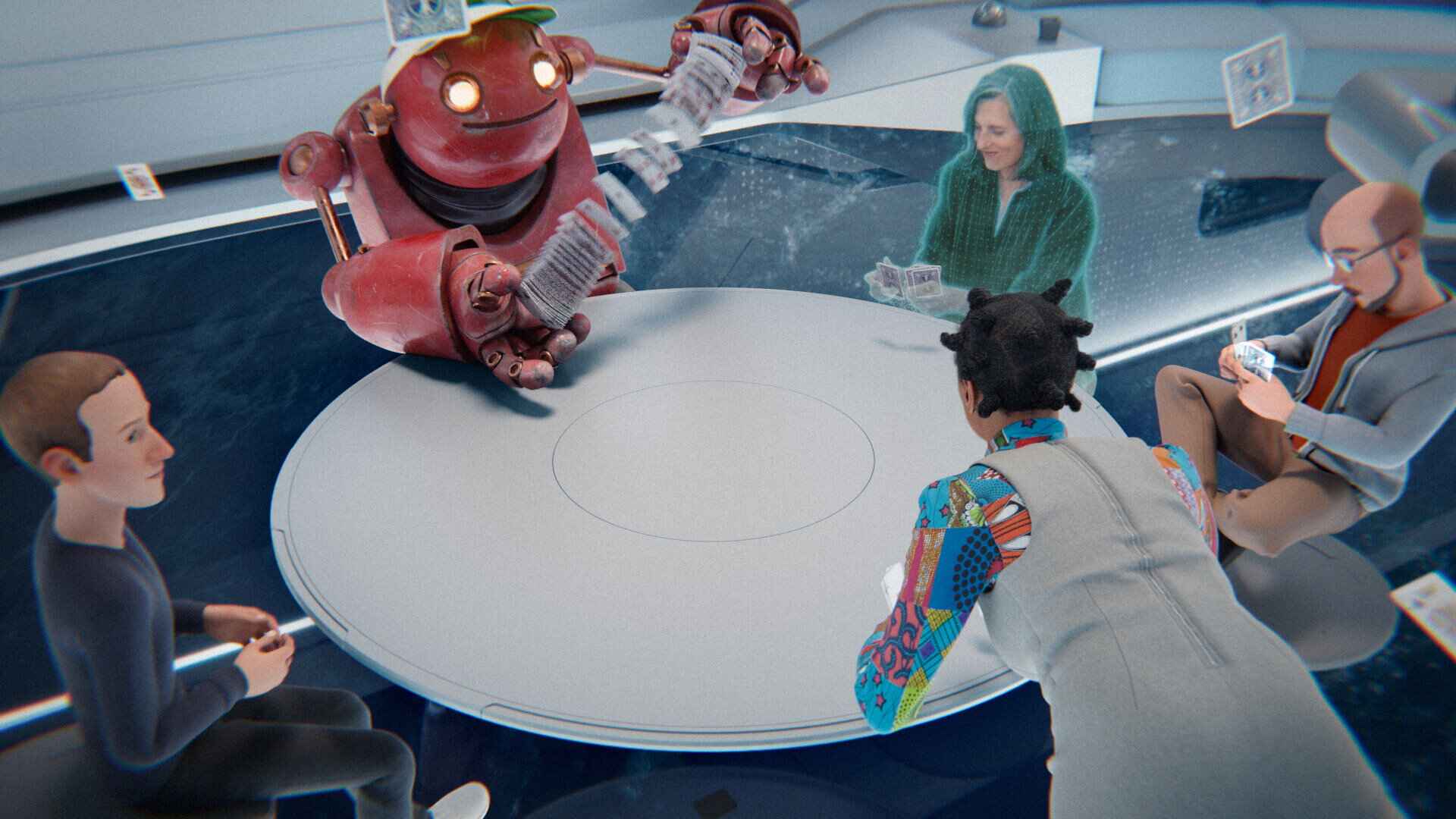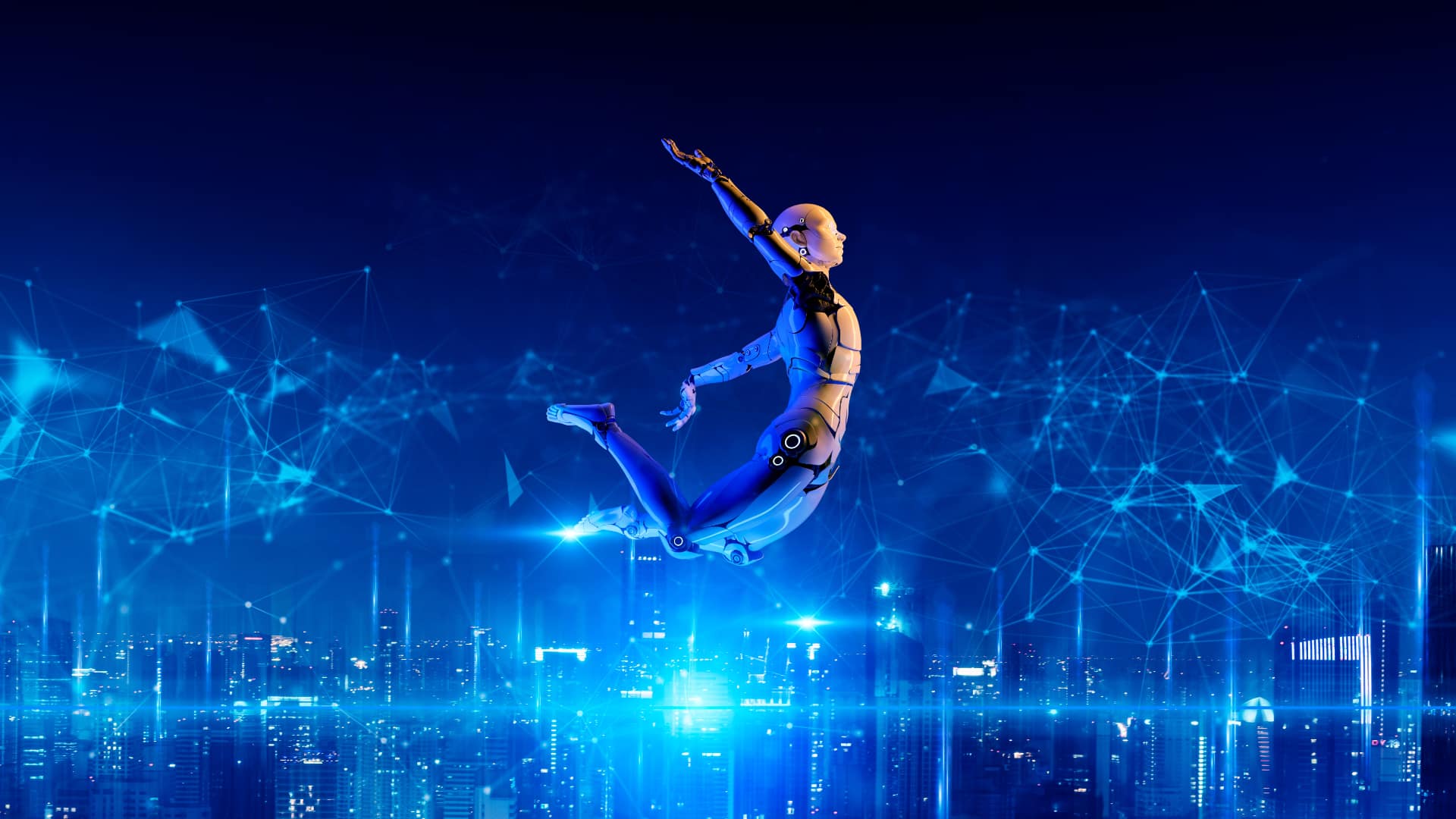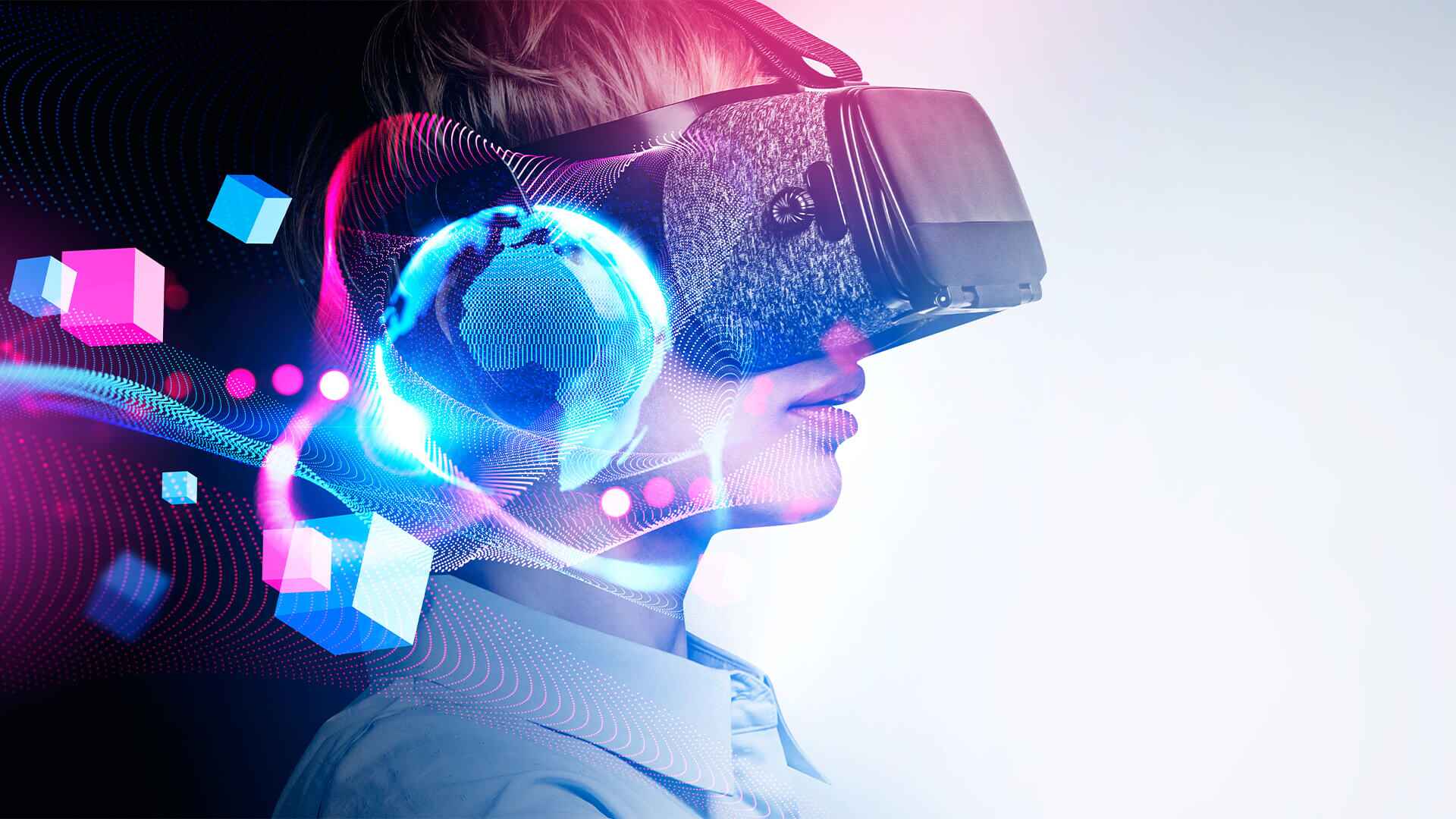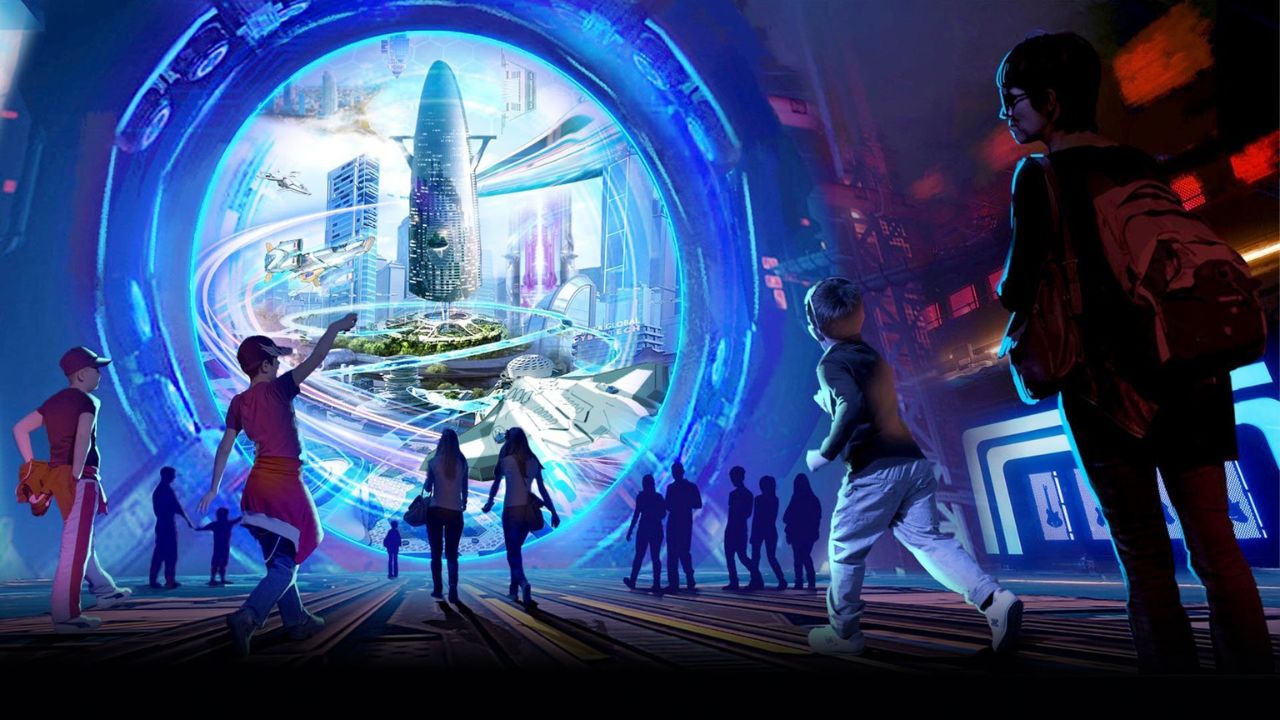Introduction
Welcome to the world of the Metaverse, an evolving digital realm that has captured the imagination of millions around the globe. The concept of the Metaverse has gained significant attention in recent years, as advancements in technology have enabled us to create immersive virtual spaces that mimic aspects of the physical world. From virtual reality to augmented reality, the Metaverse is offering new possibilities for social interaction, entertainment, and even the economy.
But what exactly is the Metaverse? In simple terms, it can be described as a collective virtual shared space, where users can interact with each other and their surroundings in real-time. Think of it as a combination of virtual reality, social networking, gaming, and commerce, all merged together to create a comprehensive digital universe. Unlike traditional online platforms, the Metaverse aims to provide a seamless and immersive experience, blurring the line between the physical and digital realms.
Over the years, the Metaverse has experienced a rapid rise in popularity. This can be attributed to the advancements in technology, such as powerful computing devices, high-speed internet connections, and the increasing affordability of virtual reality headsets. With these tools becoming more accessible, more people than ever before are venturing into the Metaverse to explore its endless possibilities.
The Metaverse has particularly gained traction in the realm of virtual reality. When we put on a VR headset, we are transported into a digital world where we can interact with objects, people, and environments in a way that feels incredibly real. This immersive experience has revolutionized the way we perceive and engage with digital content. Whether it’s exploring a virtual museum, attending a live concert, or even collaborating with colleagues in a virtual office space, the Metaverse has opened up a whole new dimension of possibilities.
What is the Metaverse?
The Metaverse is a term that has gained popularity in recent years, but what exactly does it mean? At its core, the Metaverse refers to a collective digital space that connects virtual realities, augmented realities, and online platforms into a single cohesive universe. It is a place where users can immerse themselves in a virtual environment and interact with others in real-time, blurring the line between the physical and digital worlds.
Think of the Metaverse as a vast interconnected web of virtual spaces. Each space represents a different experience or application, such as social networking, gaming, e-commerce, entertainment, education, and much more. These spaces can vary in size and complexity, ranging from simple chatrooms and multiplayer games to fully immersive virtual reality environments.
One of the key features of the Metaverse is its ability to seamlessly integrate different digital platforms and technologies. Whether you are using a virtual reality headset, a smartphone, or a computer, you can access and navigate the Metaverse from any compatible device. This flexibility allows for a truly interconnected and accessible digital experience.
In the Metaverse, users have the freedom to create their own avatars, which serve as their digital representation within the virtual space. These avatars can be customized to reflect the user’s preferences, allowing for self-expression and identity exploration. With these avatars, users can interact with others, explore virtual environments, and engage in various activities.
While the concept of the Metaverse may sound futuristic, elements of it already exist in our current digital landscape. Online multiplayer games, social media platforms, and virtual reality experiences all provide glimpses of what the Metaverse could become. However, the true vision of the Metaverse goes beyond individual applications and aims to create a unified and immersive digital experience that transcends traditional online boundaries.
At its core, the Metaverse is about connectivity and shared experiences. It is a space that breaks down geographical and physical limitations, allowing people from all over the world to come together and interact in ways that were previously unimaginable. Whether it’s attending a virtual concert with friends from different countries, collaborating on a project with people from different backgrounds, or simply socializing and forming connections, the Metaverse has the potential to reshape the way we interact and experience the digital world.
The Rise of the Metaverse
The concept of the Metaverse has been gradually gaining momentum over the years, but recent advancements in technology have propelled its rise to unprecedented heights. As computing power and internet connectivity continue to improve, the possibilities for creating immersive digital experiences have expanded, leading to a surge in interest and investment in the development of the Metaverse.
One of the driving factors behind the rise of the Metaverse is the increasing adoption of virtual reality (VR) technology. VR headsets have become more affordable and accessible, allowing a larger audience to experience virtual worlds firsthand. This has opened the door for creators and developers to experiment with new ways of delivering immersive experiences and has accelerated the growth of the Metaverse.
In addition to VR, the widespread use of smartphones and other portable devices has played a significant role in the popularity of the Metaverse. These devices offer the convenience of accessing digital content on the go, making it easier for users to connect and participate in the Metaverse regardless of their location.
Furthermore, the COVID-19 pandemic has accelerated the need for virtual experiences and remote communication. With the limitations on in-person interactions, people turned to the Metaverse as a way to connect, communicate, and conduct business. Virtual meetings, online events, and virtual socializing became the norm, prompting even more individuals and businesses to explore the possibilities of the Metaverse.
The rise of blockchain technology has also had a significant impact on the Metaverse. By leveraging blockchain-based platforms, users can buy, sell, and trade virtual assets within the Metaverse, creating a decentralized economy. This has led to the emergence of virtual currencies, non-fungible tokens (NFTs), and decentralized marketplaces, further solidifying the foundation of the Metaverse as a thriving digital ecosystem.
Moreover, the entertainment industry has embraced the Metaverse as a new avenue for content creation and consumption. Virtual concerts, live-streamed gaming events, and interactive experiences have gained popularity, allowing artists and entertainers to reach a global audience and monetize their digital creations. This convergence of technology and entertainment has propelled the Metaverse into the mainstream, capturing the attention and imagination of people from all walks of life.
As the Metaverse continues to evolve and expand, it is poised to revolutionize not just entertainment and gaming, but also areas such as education, healthcare, and remote work. The possibilities are vast, and with constant advancements in technology, the Metaverse is set to become an integral part of our daily lives, transforming the way we interact, learn, and experience the world around us.
Metaverse and Virtual Reality
Virtual reality (VR) is a key component of the Metaverse, serving as the technology that enables users to immerse themselves in virtual environments and interact with others in real-time. By donning a VR headset, users can step into digital worlds that simulate the physical space, allowing for a truly immersive and interactive experience.
One of the main advantages of using virtual reality in the Metaverse is the sense of presence it creates. VR technology utilizes head-tracking and motion controllers to mimic real-world movements, making users feel as though they are inside the virtual environment. This level of immersion enhances the overall experience, making interactions with others and the surroundings more tangible and realistic.
In the Metaverse, virtual reality enables users to explore and interact with a wide range of virtual spaces and experiences. Whether it’s exploring a virtual art gallery, engaging in virtual team building exercises, or attending a virtual conference, VR brings these experiences to life in a way that traditional online platforms cannot.
Virtual reality also has the potential to revolutionize education and training within the Metaverse. By creating virtual learning environments, educators can provide immersive and interactive lessons that enhance student engagement and understanding. Medical professionals can also benefit from VR simulations, allowing them to practice complex procedures in a safe and controlled environment.
Furthermore, virtual reality gaming has been a driving force behind the growth of the Metaverse. VR gaming offers a level of immersion and interactivity that traditional gaming platforms cannot match. Users can step into a virtual world and engage in thrilling experiences, whether it’s exploring fantastical landscapes, battling virtual opponents, or participating in multiplayer games with friends from around the globe.
In addition to gaming, virtual reality has the potential to reshape the way we socialize and connect within the Metaverse. Virtual chatrooms and social platforms allow users to interact with each other using their avatars, creating a sense of presence and shared space. This can lead to new forms of social interaction and relationships, where users can meet and form connections regardless of their physical location.
However, it’s important to note that virtual reality is still in its early stages, and there are limitations that need to be addressed. The cost and accessibility of VR hardware, motion sickness for some users, and the need for more diverse and compelling content are among the challenges that need to be overcome for virtual reality to reach its full potential within the Metaverse.
Despite these challenges, the integration of virtual reality within the Metaverse has already shown tremendous promise. As technology continues to advance, we can expect virtual reality experiences to become more immersive, accessible, and integrated into our everyday lives, further blurring the boundaries between the physical and digital realms.
The Impact of Metaverse on Social Interaction
The emergence of the Metaverse has had a significant impact on social interaction, revolutionizing the way we connect, communicate, and collaborate in the digital realm. The Metaverse provides a platform for people from all over the world to come together, breaking down physical and geographical barriers and enabling new forms of social interaction.
One of the key aspects of the Metaverse’s impact on social interaction is the ability to connect and engage with others in immersive virtual environments. Virtual reality experiences within the Metaverse offer a sense of presence and shared space, allowing users to interact with each other as if they were physically together. This fosters a deeper level of connection and socialization that transcends traditional online interactions.
The Metaverse also provides opportunities for new and unique social experiences. Users can attend virtual events, ranging from concerts and festivals to conferences and parties, where they can interact with others who share similar interests and passions. These experiences foster a sense of community and belonging, even in a digital space.
In addition to shared experiences, the Metaverse enables collaboration on a whole new level. Virtual offices and workspaces within the Metaverse allow for remote teams to come together, share ideas, and work on projects in real-time. This not only increases productivity and efficiency but also breaks down geographical barriers, opening up opportunities for global collaboration and innovation.
Moreover, the Metaverse offers a space for self-expression and identity exploration. Users can create and customize their digital avatars to reflect their personalities, allowing for a unique representation of themselves within the virtual world. This enables individuals to express themselves in ways that may not be possible in the physical world, fostering creativity and self-discovery.
While the Metaverse provides numerous advantages for social interaction, there are also challenges that need to be addressed. One of these challenges is the potential for anonymity and the associated risks of online interactions. It is important to develop robust systems and policies to ensure the safety and well-being of users within the Metaverse, preventing issues such as cyberbullying and harassment.
Furthermore, the Metaverse should strive to be inclusive and accessible to all. Efforts should be made to bridge the digital divide and ensure that individuals from diverse backgrounds and with varying levels of technological access can participate in the Metaverse and benefit from its social opportunities. This includes considerations for individuals with disabilities, language barriers, and economic constraints.
Overall, the impact of the Metaverse on social interaction is significant, offering new possibilities for connection, collaboration, and community-building. As the technology continues to advance and accessibility improves, the potential for the Metaverse to reshape the way we interact and socialize in the digital world is immense.
Metaverse and the Economy
The Metaverse has the potential to reshape the economy in numerous ways, offering new opportunities for commerce, entrepreneurship, and innovation. As virtual worlds within the Metaverse continue to evolve, they are becoming thriving digital marketplaces, creating a new economy that is both interconnected and decentralized.
One of the key aspects of the Metaverse’s impact on the economy is the emergence of virtual currencies and digital assets. Within the Metaverse, users can buy, sell, and trade virtual goods and services using virtual currencies, which exist solely within the digital realm. These virtual currencies can be used to purchase virtual items, experiences, or even real-world goods and services, creating a new form of digital commerce.
Furthermore, the rise of non-fungible tokens (NFTs) has gained significant attention within the Metaverse. NFTs represent unique digital assets that can be bought, sold, and traded on blockchain-based platforms. These assets can range from virtual artwork, virtual real estate, digital collectibles, and much more. The use of NFTs within the Metaverse has opened up new revenue streams for creators and artists, allowing them to monetize their digital creations and retain ownership rights.
The Metaverse also provides opportunities for entrepreneurship and the creation of virtual businesses. Users can establish virtual storefronts and online businesses within the digital space, catering to the needs and desires of the Metaverse’s user base. From virtual fashion boutiques to virtual real estate agencies, the possibilities for digital entrepreneurship within the Metaverse are vast.
Moreover, the Metaverse offers unique advertising and marketing opportunities. Brands and businesses can engage with users through immersive and interactive experiences, creating memorable connections and driving brand engagement. Virtual sponsorships, in-game advertising, and branded virtual experiences are just some of the ways in which companies can leverage the Metaverse to reach their target audience in innovative ways.
In addition to traditional commerce, the Metaverse has the potential to transform the gig economy. Users can offer their skills, services, and expertise within the Metaverse, such as virtual event organizing, virtual tutoring, virtual performance, and much more. This opens up new avenues for freelancers and independent contractors to monetize their talents in a digital environment.
However, it’s important to consider the challenges and ethical concerns that may arise within the Metaverse’s economy. Issues such as virtual asset fraud, copyright infringement, and the exploitation of virtual labor need to be addressed to ensure a fair and ethical economy within the Metaverse. Regulations and policies that protect users and uphold the integrity of virtual transactions will play a crucial role in the sustainable development of the Metaverse’s economy.
Overall, the Metaverse has the potential to revolutionize the economy, creating a new landscape for commerce, entrepreneurship, and digital innovation. As more individuals and businesses embrace the Metaverse’s economic opportunities, we can expect to see a dynamic and interconnected digital economy that blurs the lines between the physical and digital realms.
Criticisms of the Metaverse
While the Metaverse holds immense potential and has garnered significant attention, it is not without its fair share of criticisms. It’s important to critically evaluate the challenges and concerns surrounding the development and implementation of the Metaverse as we navigate this evolving digital landscape.
One of the main criticisms of the Metaverse is the potential for it to exacerbate existing inequalities. The accessibility of technology, such as virtual reality headsets, high-speed internet, and powerful devices, can create a digital divide, leaving certain populations or regions at a disadvantage. This could further perpetuate inequalities in terms of access to education, economic opportunities, and social experiences within the Metaverse.
Privacy and data security are also major concerns in the Metaverse. With increased interconnectivity and the collection of vast amounts of user data, there is a risk of data breaches and unauthorized use of personal information. The need for robust privacy measures and transparent data practices is crucial to ensure the protection of user rights and maintain trust in the Metaverse.
Furthermore, the immersive nature of the Metaverse raises questions about the blurring of boundaries between the virtual and physical worlds. Spending excessive time in virtual environments may lead to a disconnection from reality and social isolation. It is important to strike a balance between the digital and physical realms to maintain overall well-being and social connections.
Another criticism is the potential for addiction and detrimental effects on mental health. The allure of the Metaverse and the immersive experiences it offers may lead to excessive use and dependency. This can have negative consequences on individuals’ mental health and overall quality of life. It is crucial to approach the use of the Metaverse mindfully and ensure that individuals have access to resources and support systems for healthy engagement.
There are also concerns about the concentration of power and influence within the Metaverse. As certain platforms and companies dominate the development and operation of the Metaverse, there is a risk of centralization and limited diversity of experiences. This could potentially stifle innovation and limit the opportunities for smaller creators and businesses within the digital ecosystem.
Lastly, critics have raised ethical concerns related to the creation and representation of virtual identities and avatars. Issues such as cultural appropriation, misrepresentation, and the potential for malicious activities within the Metaverse require careful consideration and ethical guidelines. Ensuring that individuals have control over their virtual identities and promoting inclusive representation is crucial for a more equitable and respectful digital environment.
These criticisms highlight the importance of ongoing conversations, research, and ethical considerations as the Metaverse continues to evolve. By addressing these concerns, developers, policymakers, and users can work together to create a more inclusive, equitable, and responsible digital future.
The Future of the Metaverse
The Metaverse represents an exciting and rapidly evolving digital frontier, and its future holds immense potential for innovation and transformation. As technology continues to advance and our understanding of the Metaverse deepens, we can expect to see significant developments in various aspects of this digital realm.
One area of growth in the future of the Metaverse is the expansion and diversification of virtual experiences. We can anticipate the development of more realistic and immersive virtual worlds, with improved graphics, realistic physics, and dynamic environments. These advancements will enhance the overall experience and further blur the lines between the physical and virtual realms.
In addition, the Metaverse is likely to become increasingly interconnected and interoperable. We can expect to see improved integration between different virtual platforms, allowing users to seamlessly move between virtual spaces and experiences. This will create a more cohesive and unified digital ecosystem, enabling new forms of collaboration, communication, and socialization.
The development of artificial intelligence (AI) and machine learning technologies will play a significant role in the future of the Metaverse. AI-powered virtual assistants and intelligent NPCs (non-player characters) will enhance the realism and interactivity within virtual environments. These advancements will create more dynamic and engaging experiences, where virtual entities can adapt and respond to user interactions in real-time.
Moreover, advancements in haptic technology will contribute to a more immersive and sensory-rich Metaverse experience. Haptic feedback devices, such as gloves and vests, will enable users to feel and touch virtual objects, further enhancing the realism and interactivity. This will open up new possibilities for virtual training, medical simulations, and even virtual tourism.
The integration of the Metaverse with other emerging technologies is also a significant aspect of its future. The convergence of the Metaverse with augmented reality (AR) and mixed reality (MR) technologies will enable users to seamlessly transition between the physical and virtual worlds. This integration will have profound implications for industries such as architecture, education, healthcare, and entertainment, allowing for new forms of interactive and immersive experiences.
Furthermore, blockchain technology will continue to play a crucial role in shaping the future of the Metaverse. The use of blockchain-based platforms will enable decentralized ownership, secure transactions, and transparent digital economies within the Metaverse. This will empower users to have greater control over their virtual assets, protect their intellectual property rights, and participate in a more equitable and inclusive digital ecosystem.
Finally, the future of the Metaverse will heavily rely on collaboration, interdisciplinary efforts, and user participation. As more individuals, organizations, and industries embrace the opportunities offered by the Metaverse, we can expect to see a vibrant ecosystem of creators, developers, and innovators contributing to its growth. To ensure the ethical and sustainable development of the Metaverse, it will be essential to engage in ongoing dialogue and establish standards, regulations, and guidelines that prioritize user rights, privacy, and inclusivity.
The future of the Metaverse holds immense potential for transforming the way we live, work, and interact in the digital age. As technology continues to advance and our understanding of the possibilities expands, the Metaverse will undoubtedly become an integral part of our everyday lives, enriching our experiences and bridging the gap between the physical and virtual worlds.
Conclusion
The Metaverse has emerged as a dynamic and transformative digital frontier, revolutionizing the way we interact, communicate, and engage with the digital world. Its potential for immersive experiences, social connection, and economic opportunities has captured the attention and imagination of people worldwide.
We explored the concept of the Metaverse, a collective virtual shared space that blurs the boundaries between the physical and digital realms. The rise of virtual reality, advancements in technology, and the need for remote interactions during the COVID-19 pandemic have all contributed to the rapid growth and popularity of the Metaverse.
Throughout our exploration, we discovered the impact of the Metaverse on various aspects of our lives. From virtual reality experiences to the reimagining of social interactions, the Metaverse has opened up new avenues for self-expression, connection, collaboration, and economic opportunities. It has the potential to reshape industries, such as entertainment, education, and commerce, and create a new form of interconnected and decentralized digital economy.
However, we also recognize the criticisms and challenges that come with the development of the Metaverse. Issues such as accessibility, privacy, addiction, and the concentration of power need to be addressed to ensure an inclusive, ethical, and balanced digital ecosystem.
Looking ahead, the future of the Metaverse holds immense potential and exciting possibilities. As technology continues to advance, we can expect improved immersive experiences, greater integration of emerging technologies, and enhanced collaboration within the Metaverse. It will require ongoing dialogue, interdisciplinary efforts, and user participation to create a Metaverse that prioritizes user rights, inclusivity, and sustainability.
Ultimately, the Metaverse represents a new frontier in the digital realm, offering a transformative and interconnected digital experience that has the power to reshape the way we live, work, and interact in the future. By navigating the opportunities and challenges with careful consideration and ethical considerations, we can harness the full potential of the Metaverse and create a digital ecosystem that enriches our lives and fosters human connection and innovation.

























